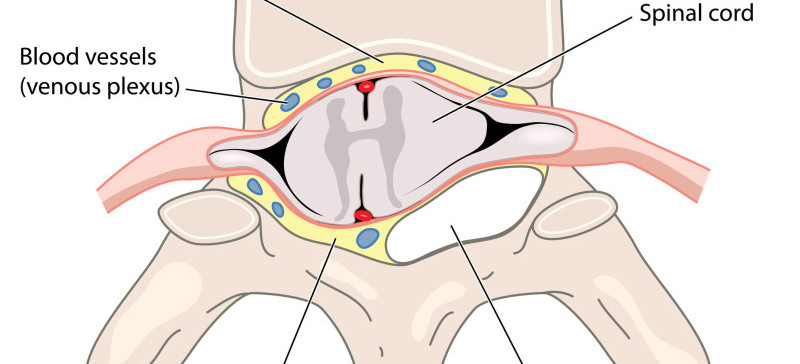What is a Spinal Abscess?
Category: Spine | Author: Stefano Sinicropi

A spinal cord abscess (SCA) is a rare condition in the spine that can cause permanent damage. The abscess is caused when tissues in the spine become infected. Like in any part of your body, when an infection sets in, your body’s natural response is to send white blood cells to the area to combat the infection. As the cells fill the damaged tissue, it produces pus as a byproduct. This pus is filled with things like dying tissue, dead cells and bacteria that the body wants to expel. Unfortunately, when this fluid buildup occurs in your spine, sometimes it can put pressure on the sensitive areas of your back. These abscess can cause numerous issues, which we’ll detail in the next section.
Spinal Abscess Symptoms
The pressure of the abscess can cause neurological problems, like:
- Lower body paralysis
- Loss of sensation
- Muscle/limb weakness
- Regionalized pain
- Sudden onset of pain
- Fever
There are a number of different things that can increase your risk or lead to an infection and an abscess in the spine. Some factors that can increase your risk of developing an infection in the spine include long-term use of blood thinners, a weakened immune system from another health condition or a ruptured gallbladder, which can cause bacteria to spread inside your body.
Aside from factors that increase a person’s risk for an abscess, some events that can actually cause an abscess to develop include:
- Acute trauma, especially is a foreign object enters the body.
- Boils on the skin can cause bacteria buildup.
- Septicemia is an infection of the blood that can spread to the central nervous system, which can lead to the development of a spinal cord abscess
Diagnosis and Treatment of Spinal Abscess
Diagnosing a spinal abscess is a pretty basic procedure. The presence of an infection can typically be diagnosed with a simple blood test, and a CT scan or MRI can look for fluid buildup in the spine.
If the doctor diagnoses you with an abscess, it can be treated in a few different ways. If the abscess has developed but there is no sign of an infection, your doctor will likely prescribe antibiotics to prevent an infection from setting in. Sometimes the abscess will resolve on its own, but other times a surgical procedure is needed to drain the fluid. This is typically performed via a laminectomy. During the procedure, the patient is put under general anesthesia and a small opening is made in the back. Surgeons delicately puncture the fluid filled sac and drain the fluid, careful to keep any fluid from spilling as this could cause any infection to spread. The abscess is then cleaned with sanitary saline to disinfect the area and remove all bacteria. The opening is then closed with sutures, and the patient heads off to the recovery ward.